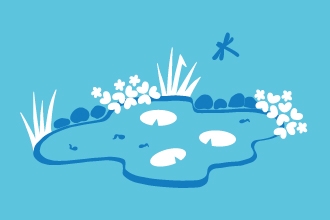As days get warmer, it's a chance to get out and survey wildlife. All the trainees got chance to do this in spring when we helped to search for great crested newts.
On a dry evening we all set off with full bellies from enjoying a pub meal to join Worcestershire Wildlife Consultancy at Lower Smite Farm in checking three of the ponds for great crested newts. Great crested newts are a protected species within the UK and you must be licensed or with a license holder (as we were) to be able to survey them, which is an activity that can disturb them and their habitats.
As we waited for the sun to set, a full briefing was given about UK amphibians and what was involved in the task. Within the UK there are three species of newt; great crested, palmate and smooth (also known as common). The ponds at Lower Smite Farm provide habitats for two of these species, great crested and smooth newts. Palmate newts are less common and tend to occur in more acidic environments.
The briefing provided a great opportunity for us to ask questions and learn more about each of the species, which I hadn’t read a lot about but would like to learn more about. We learnt about great crested newt habitat suitability index; a survey that isn't a substitute for newt surveys but is a good way of measuring habitat suitability, providing us with information on what improvements are needed to make a pond more suitable for great crested newts to take up residence.
As the sun began to set it was time to head off on our search. With our torches at the ready, we set off with bottle traps and nets. Great crested newts spend most of the day sheltered on land in burrows or under logs from predation by herons and other birds. They're most active in the evening when they come to open water to find a mate or to hunt for food such as other newts, tadpoles, young froglets, worms, insect larvae and water snails. Breeding takes place from around March to June; an elaborate courtship routine sees males displaying before female newts and ends with females laying around 200 eggs that are individually wrapped inside leaves of pond plants.
Great crested newts have a dark grey-brown back and flanks that are covered in darker spots, making them appear black. Their undersides are a yellow-orange colour with large dark spots. They reach lengths of 17cm, making them the largest species of newt within Great Britain.




